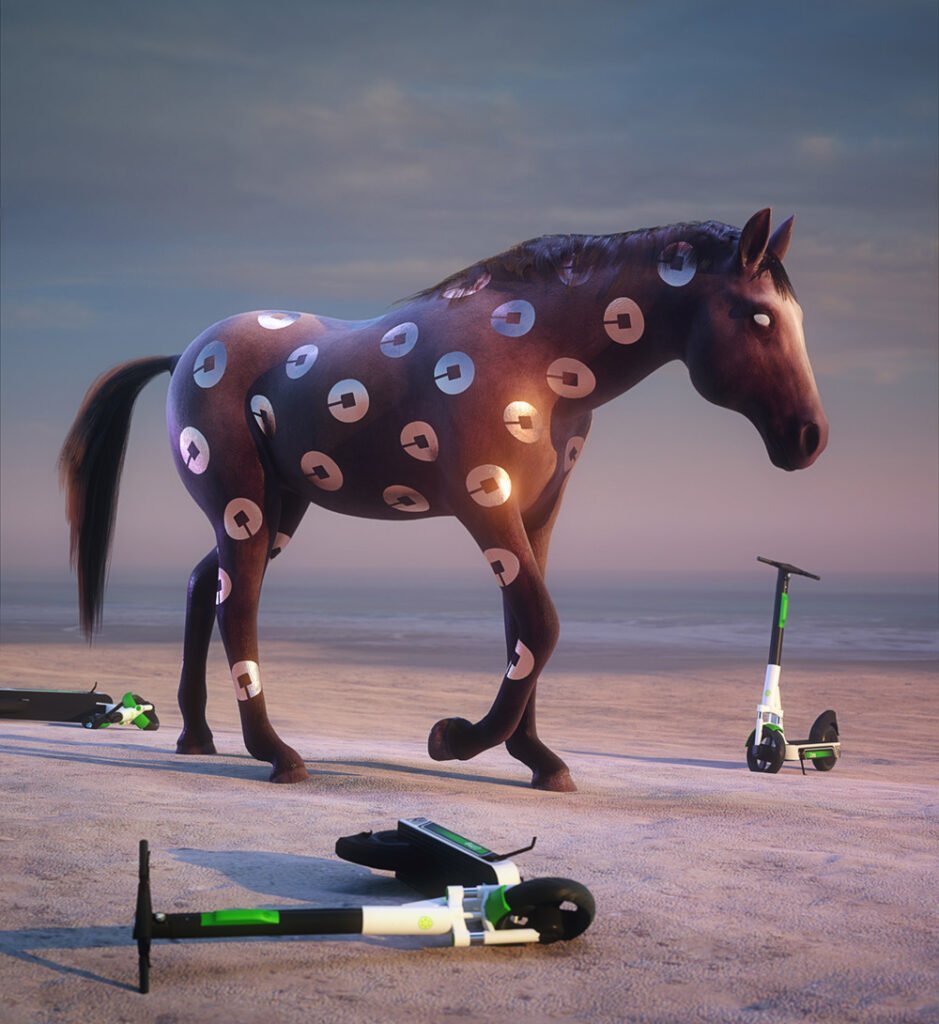In our latest Artist Voice, a series where we gain a deeper insight into a particular photographic artist’s practice, we talk to Jonathan Monaghan – represented by bitforms gallery (New York). Founded in 2001, bitforms gallery represents established, mid-career, and emerging artists critically engaged with new technologies. Spanning the rich history of media art through its current developments, the gallery’s program offers an incisive perspective on the fields of digital, internet, time-based, and new media art forms. bitforms gallery has held several solo exhibitions for Jonathan Monaghan. In 2021, his video work Den of Wolves (2020) was featured in the Screen section of PHOTOFAIRS Shanghai.

Jonathan Monaghan (photo by E. Brady Robinson )
“As someone who works with digital technology, I try to offer critical perspectives on the digital age.”
Jonathan Monaghan (b.1986, New York) is a visual artist working across a range of media, including computer animated video, sculpture and prints, to produce otherworldly objects and narratives. Monaghan examines elements of art history and contemporary culture through an interdisciplinary approach, and engages with cutting-edge technologies as part of his artistic practice. His highly-crafted, fantastical works weave together ancient myths and metaphors with wide-ranging references to science fiction, baroque architecture, and historical artworks, uncovering subconscious anxieties associated with technology and consumerism.
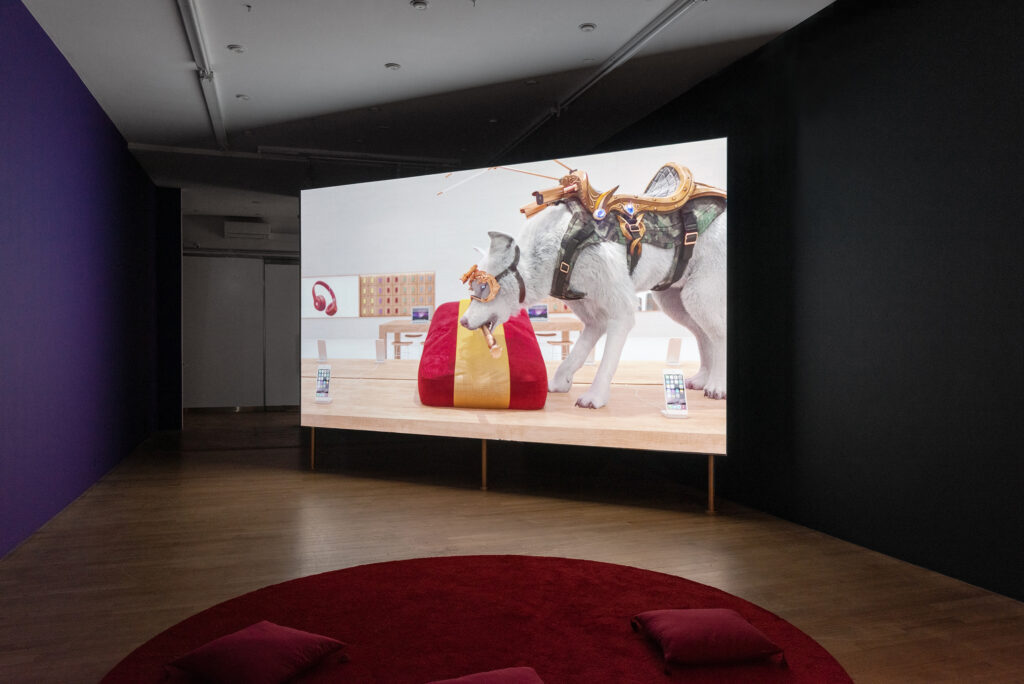
© Jonathan Monaghan, Den of Wolves, 2020. Courtesy of the artist & bitforms gallery (New York)
His work has been exhibited internationally, including solo exhibitions at The Walters Art Museum in Baltimore, Spazio Ridotto in Venice, and Market Gallery in Glasgow. Group exhibitions include at The Palais de Tokyo in Paris and the Sundance Film Festival. His work has been reviewed in The Washington Post, VICE, The Wall Street Journal, and The Village Voice, amongst others.
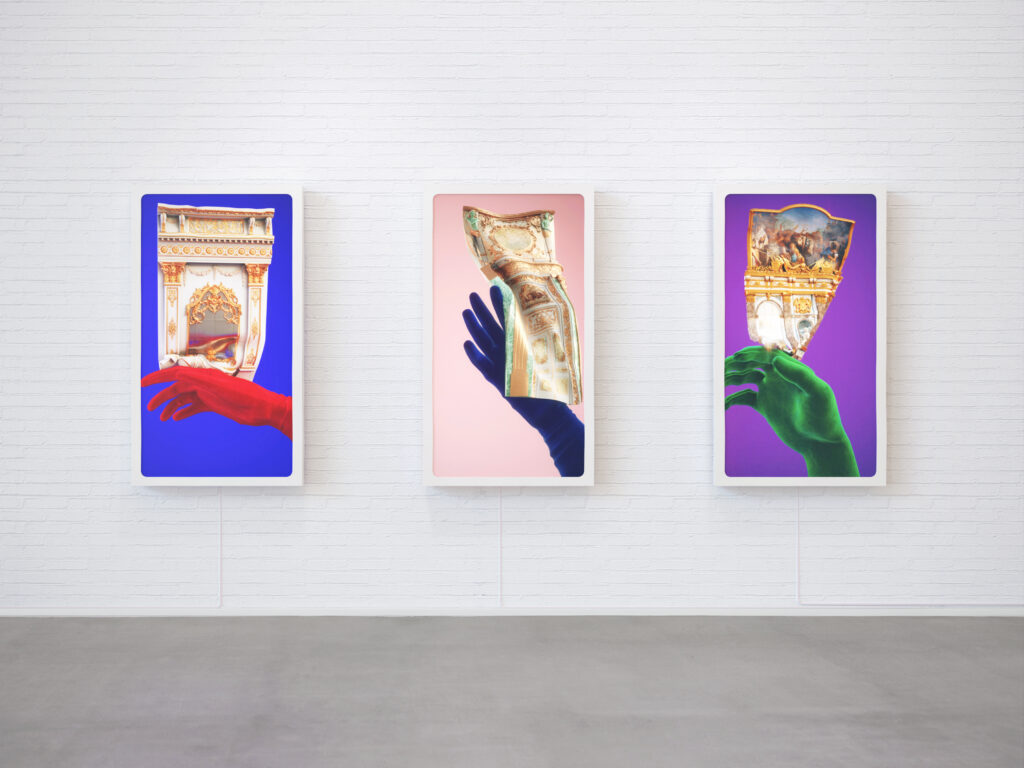
© Jonathan Monaghan, Tactile Palaces, 2021. Courtesy of the artist & bitforms gallery (New York)
PF: When did your interest in creating art begin?
JM: My first artistic interests were not traditional painters, sculptors, or even video artists, but video game designers and science fiction movies. Playing video games as a child, I was much more interested in exploring the created environments rather than playing the actual game. This led to me creating custom content and environments for the games I was playing, in addition to learning 3D modelling and animation software. But I began to make work that was more personal and challenging than what you might find in the more commercial arenas. I then started exhibiting this work in galleries and museums.
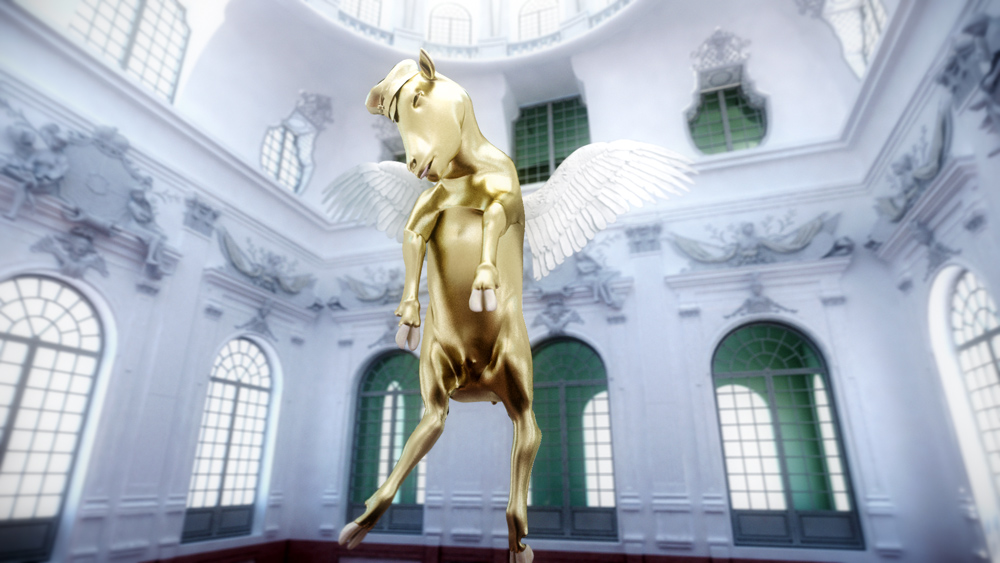
© Jonathan Monaghan, Sacrifice of the Mushroom Kings, 2012. Courtesy of the artist & bitforms gallery (New York)
PF: You’re known for your success with NFTs, what excites you about them?
JM: I was doing an artist residency in Berlin in 2013 when I met Masha and Trent McConaghy. One evening over dinner they introduced me to the concept of using a blockchain as a distributed ledger to secure digital artwork. This concept fascinated me because I felt art collectors and even institutions were still wary about acquiring digitally native artworks, and this provided a more secure way to track provenance and authenticate my works. We did a lot of experimentation using the bitcoin blockchain to create what were essentially proto-NFTs. It was pretty incredible to see this concept develop into what it is today.

© Jonathan Monaghan, Superfluity, 2021. Courtesy of the artist & bitforms gallery (New York)
PF: Your work Den of Wolves was shown at PHOTOFAIRS Shanghai 2021. It’s noted for being composed from one continuous camera shot, why do you feel this approach aligns with the themes of the work?
JM: I like to think of my video installations as somewhere between cinema and a video game. They have no beginning or end, no cuts or edits, yet they rely very much on cinematic compositions. But also in a video game you are often exploring an environment, and so with a processional camera motion my work does something similar where the narrative is revealed as the spaces and environments I create are explored.
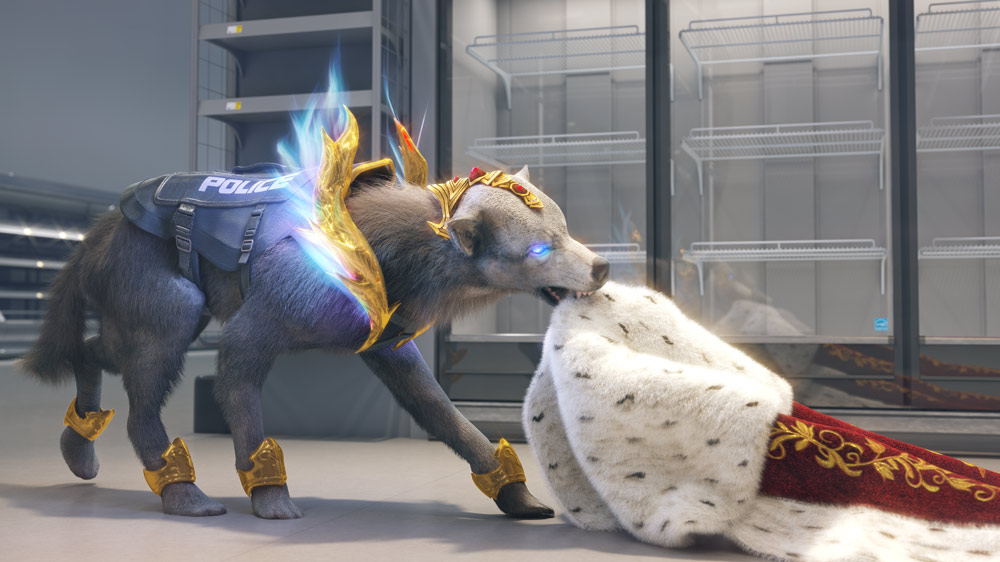
© Jonathan Monaghan, Den of Wolves, 2020. Courtesy of the artist & bitforms gallery (New York)
PF: Your work is rooted in wide-ranging themes and appears to be inspired by science fiction, baroque architecture and historical artworks. Can you tell us about how you became interested in these genres?
JM: My computer-animated video installations construct dreamlike narratives that allude to the dehumanizing effects of technology and consumerism. I draw from a wide range of sources, including ancient mythologies, commercial architecture and corporate logos, to imagine a mythical world where the boundaries between the natural and man-made are subverted in fantastical and sometimes humorous ways. The imagery and themes in my video installations also inform the rest of my multidisciplinary body of work, reappearing in my prints and sculptures, among other mediums. My works appropriate the sleek, computer-generated techniques and aesthetics found in video games, advertisements and real estate renderings. This provides my audience with a familiar framework, but recast through my critical reflections on the digital landscape, the works also elicit deep-seated anxieties about the future.
I often begin by researching ancient myths and imagining new ways to tell these ancient stories. I weave this together with wide-ranging references to science fiction, baroque architecture, and historical artworks. I am inspired by and reimagine everything from Faberge Eggs to specific historical paintings. The result is a cross-disciplinary, yet connected body of work offering critical reflections on the technological landscape they come from.
© Jonathan Monaghan, After Fabergé, 2014. Courtesy of the artist & bitforms gallery (New York)
PF: Your work is an interesting mix of soft colours and quite harsh subject matter, can you tell us why this contrast is key in your work?
JM: We don’t normally think of the digital age as opulent, but that is exactly what it is. Digital technology today is all encompassing, inescapable and decadent. It’s much like Rococo art and architecture in my opinion. Which does have soft tones and colors, but is also overwhelming. And so through my work I try to express this.
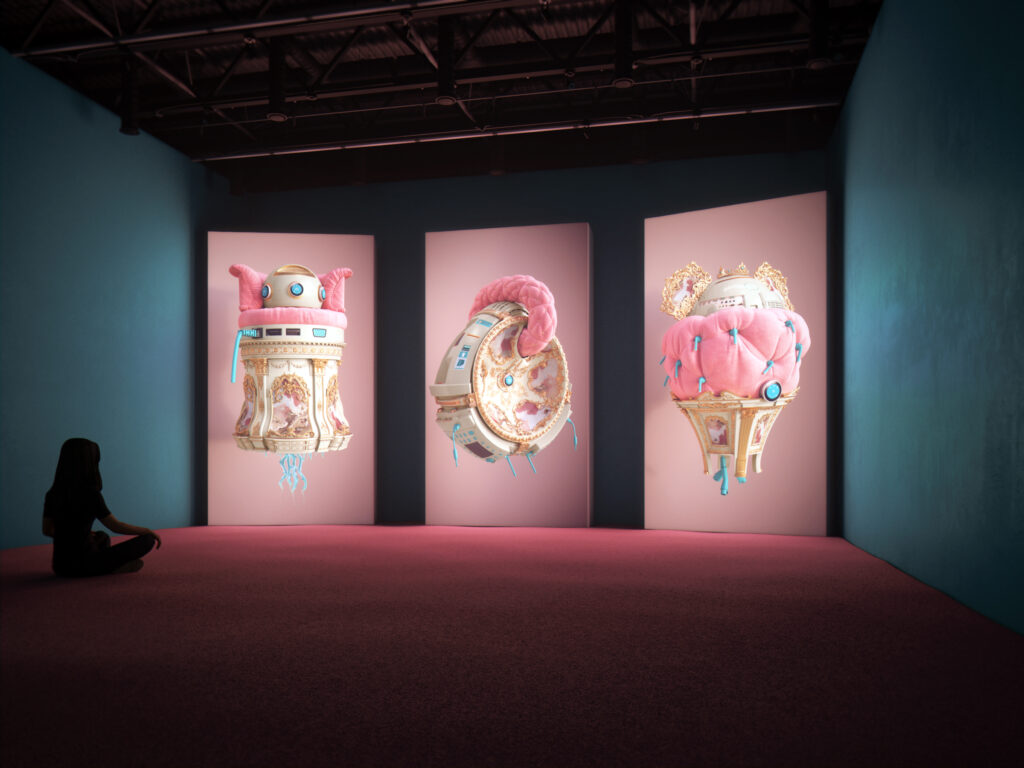
© Jonathan Monaghan, Superfluity, 2021. Courtesy of the artist & bitforms gallery (New York)
PF: You say your works deal with the dualities and issues relating to the digital world, what are those issues and dualities?
JM: As someone who works with digital technology, I try to offer critical perspectives on the digital age. The relationship between technology and the natural world is a discordant one, and I try to explore this discordance in all my work.
PF: What are you currently working on now?
JM: I just finished creating an installation for The Phillips Collection in Washington D.C. This museum has a collection of historical artworks and invites artists to create new work that’s in dialogue with them. I presented a new animation about a surreal horse, which is inspired by historical paintings of horses from the museum’s collection. Additionally I am creating a new animation commission for an outdoor public LED screen in Chicago.
© Jonathan Monaghan, Move the Way you Want, site-specific installation at The Phillips Collection, Washington D.C., 2022.
Courtesy of the artist & bitforms gallery (New York)
PF: Describe your work in three words.
JM: Digital, nightmare and myth.
